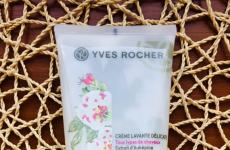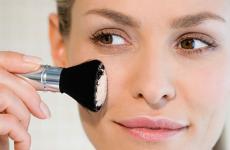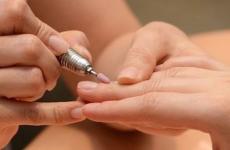A newborn has a mole on his back from birth. When does a child get moles? What to do if a child’s mole is red or growing? At what age do they appear?
Moles in newborns are common marks on the body. Each of them has its own story. Doctors call moles nevi. Many young mothers, noticing a spot that has appeared, sound the alarm: what if it is dangerous to health and how to get rid of it? Why does a baby get moles? Doctors believe that during pregnancy, when the circulatory system is formed, a malfunction occurs. It can occur during premature birth or weakened labor.
Moles on newborns can be completely harmless, but you should still consult a doctor. He will determine the nature of the nevus and recommend what can be done specifically in your case.
Types of moles (birthmarks) in newborns
Nevi cannot be the same. They differ in shape, color and size. They are formed as a result of the interweaving of accumulated small vessels. Using them, the doctor determines the nature of the baby’s mole.

If a mole larger than 20 cm appears on a baby’s body, then the likelihood of its degeneration is too high. In this case, it is imperative that he make a decision on what to do with the nevus.
A child tore off a mole, what should I do?
 This can happen spontaneously in a baby; he does not monitor his actions like adults. Therefore, if a child rips off a mole, you should immediately consult a doctor, but before that, perform first aid:
This can happen spontaneously in a baby; he does not monitor his actions like adults. Therefore, if a child rips off a mole, you should immediately consult a doctor, but before that, perform first aid:
- Stop bleeding that may occur immediately after the nevus is separated. Soak a sterile cotton wool or bandage with peroxide and apply to the area. Hold it until the bleeding stops.
- Be sure (if possible immediately) to visit a dermatologist who will solve your situation. It doesn’t matter if the baby’s nevus is torn or completely torn off - a consultation is necessary.
- The doctor will check the mole, take a test and answer your questions. If necessary, he will give directions to remove the nevus. Now this is done quickly and painlessly.
Moles in infants are formations that can appear immediately after birth or appear during the first year of the baby’s life. Age spots are caused by multiple factors and are not a sign of disease, but can cause concern for parents. A nevus consists of melanocyte cells, which are formed in utero and are prone to multiply within the epidermis under the influence of environmental factors or the developmental and growth characteristics of a child’s body.
Formation may appear in different time periods:
- congenital - formed in utero, the child is born with already formed pigment spots. The appearance in the first month of life is considered a congenital subtype of benign skin formation. Often, changes in the fetus during the formation of the epidermis are provoked by a genetic predisposition. Such nevi include Mongolian spots, vascular birthmarks of pregnancy stress (spasm, disruption of the placental blood supply with the formation of defects on the fetal body). The first mole in a newborn may go unnoticed; over time, it may darken and become prominent;
- acquired pigment spots appear when the baby's delicate skin comes into contact with direct sunlight, lack of protection (clothing, shade), immaturity of the subcutaneous tissue, and an atypical epidermal reaction to an external irritant.
Depending on the age at which age spots appear, three groups are distinguished:
- Early (from 6 months to 2 years).
- Junior preschool age (from 5 to 6 years).
- Hormonal spots in adolescents (freckles).

Reasons for its appearance and is it dangerous?
There are many reasons for the appearance of moles in an infant. According to the pediatrician Komarovsky, the presence of spots is considered normal and should not cause fear in parents.
If there are any formations on the skin, scalp, face (forehead, nose, cheeks), legs, back, you should consult a doctor. He will diagnose pigment spots in the baby.
The doctor will reassure the parents or prescribe the necessary treatment, help determine the causes of the appearance, choose a method of removal and give advice on caring for the affected area.
There are etiological reasons for the spread of pigment of a certain shape on the skin:
- Moles at birth in a child are determined in 80% of cases by a genetic hereditary tendency. If close relatives have malignant tumors, it is worth seeing a doctor to prevent the nevus from degenerating;
- ultraviolet or x-ray irradiation. When exposed to natural insolation with a burn of the surface layer of the skin, during irradiation during an x-ray (up to a year is carried out according to strict indications - suspicion of pneumonia, hip dysplasia), new pigment elements may appear;
- gender predisposition - nevi can form on the torso of girls three times more often than in boys. This factor is closely related to the hormonal characteristics of the body and the intrauterine laying of eggs;
- hormonal changes. When breastfeeding, the mother undergoes changes in the postpartum period (prolactin, oxytocin, progesterone penetrate into breast milk), and if there are any disruptions, the baby’s hormonal balance can also be disrupted. Occurs when the regulation of hormones by the hypothalamic-pituitary system is disrupted, the basal metabolism fails;
- injuries - rubbing the baby's delicate skin with rough clothing or seams, scratching labels and tags on underwear, scratching the epidermis with thin and sharp baby nails (deep wounds that take a long time to heal).
The following types of age spots pose a danger to a child:
- huge in size, more than 6-7 cm in diameter, convex nevi;
- easily traumatic formations: hanging forms, convex and lumpy, pointed, located in places of clothing friction and high pressure (belt, groin, abdomen, armpits, eyelids, feet);
- dark and rough moles in children with marble-white skin, blond or red hair, light eye color;
- when a large vessel is damaged (development of hemangiomas with blockage and malignancy, metastasis through the circulatory system of the body);
- showing signs of malignancy. Parents should remember the ACCORD scheme: asymmetry, the edge is uneven and torn, bleeding, the color is uneven or the tone has sharply changed from dark to light. Size more than 6-7 cm, rapid growth dynamics.
Only a specialist can determine whether a mole is dangerous to the health and life of the child. It is forbidden to self-medicate or eliminate nevi with home remedies without a doctor’s permission.
At what age can moles appear?
Birthmarks appear only inside the womb. Nevi appear in infants at birth (less than 1-2%) or in the first 2-3 months of life (5-7%).
Most formations appear during the period of most active growth and differentiation of cellular structures in 1-2 years.

Types of nevi
- pigment color – brown or red. Depending on the color, a mole or a vascular hemangioma is distinguished. A white or black nevus may appear (a type of brown pigment of varying intensity of coloring of the formation), blue or blue-gray (the level of pinching of the vessel, the type of damage to the veins, capillaries or arterioles);
- by size: small dots with a diameter of up to 1.5 cm, medium ones up to 10 cm; large - more than 10 cm in diameter. Large ones - rarely found in a baby, they are a cause for concern and require histological examination;
- vascular disorders: anemic red nevus (strawberry angioma), cavernous gray-blue hemangioma. Red moles in infants are common, due to the peculiarities of pregnancy and the passage of the fetus through the birth canal (compression during cephalic presentation, ischemic-hypoxic effects of pushing on unformed vascular formations);
- in shape: from oval, round, angular, to spots in the shape of animals, any object that surrounds us in everyday life;
- rising above the surface of the skin: hanging, pointed, mushroom-shaped, warty;
- depending on the depth of location: borderline (protrude slightly above the skin), intradermal spherical, hanging and convex;
- congenital and acquired.
Is it normal to have no moles?
The absence of angiomas, freckles, and birthmarks is absolutely normal, as is the presence of such. The absence of any spots is due to the structure of the skin and genetically pure DNA from the gene that causes formations on the skin. The health and functioning of organ systems does not depend on the absence of moles.
In this article:
Scientists have established for sure: whenever birthmarks appear, their formation occurs during the intrauterine development of the fetus. That is, children are born with birthmarks, but in some they are noticeable from birth, while in others they become more distinct over the years. The appearance of moles in children or their absence, one way or another, raises many questions among parents.
At what age do moles appear in a child?
Until now, no unambiguous answer has been found to the question of why in some children dark spots in the form of moles appear immediately after birth, in others hemangiomas form on the body, and in still other newborns the skin is completely clear and only during puberty marks may appear on the skin. body The main version of scientists who are trying to explain why not all babies have hemangiomas and nevi is heredity, which also determines the predisposition to the appearance of birthmarks under the influence of external factors.
If we talk about age, the exact time when the first nevi appear has not been established. There are only approximate periods when their appearance is noticed in most children:
- The most common early age when the first moles begin to appear in children is considered to be from 6 months to 2 years;
- The second wave of birthmarks was noticed in the period from 5 to 6 years;
- The largest number of pigmented nevi on the skin appears when the age reaches 12 - 15 years - that is, during puberty.
Pigmented birthmarks
Pigmented neoplasms in children are those that contain melanin, a coloring substance that gives the nevus its tint. They arise due to disturbances in the production of melanin in some skin cells.
Most tumors on the body in children appear during puberty under a surge of hormonal changes. Depending on which layer of the skin the pigmented neoplasms are located, they, as in adults, are divided into the following types:
- Borderline - cells are concentrated in the epidermis;
- Intradermal - appearing from the dermis;
- Mixed (complex) - combines the signs of borderline and intradermal formations.
Most pigmented moles in children are borderline. They appear as light yellow or brown oval or round spots. They are safe for health. After adolescence, they begin to intensively form and change until the age of 25–30 years.
If we talk about those neoplasms that we are used to seeing in adults - convex and voluminous, then in children these can be found very rarely. They are classified as pathological developments of the skin and changes must be monitored. In 50% of cases, according to statistics, large neoplasms (from 10 cm in diameter) in children degenerate into a malignant tumor, so parents should be very careful about bulging neoplasms on the baby’s skin.

Red moles
Unlike pigmented nevi, which appear in a child with age, a red mole (hemangioma) can be present in a child from birth. Red moles in children are benign formations that arose due to disturbances in the functioning of blood vessels. Most often, a child may notice the following types of red birthmarks:

Observation of pigmented nevi and hemangiomas in children
Red hemangioma of any form should be monitored. During the period of its growth (up to 6 - 12 months) it does not change, then a phase of reverse development must begin - involution. Most hemangiomas disappear by age 5.
It is important to know that if red hemangiomas did not appear during the newborn period, then such neoplasms do not disappear on their own.
Parents must not only monitor nevi and hemangiomas on the child’s body, but also follow preventive measures and doctor’s recommendations:
- In no case should you cover them with adhesive tape - a greenhouse effect is created, which can cause the degeneration of a harmless nevus into melanoma;
- Adults should ensure that children's moles are not exposed to direct sunlight in the summer from 10-11 a.m. to 4 p.m. It must be remembered that ultraviolet radiation is dangerous for pigmented tumors;
- Avoid traumatizing moles. But if a child accidentally or deliberately scratches or tears off a nevus, you should stop the bleeding, apply iodine or brilliant green to the wound, cover it with a bandage and see a doctor.
When should you get rid of tumors on a child’s body?
It is recommended to get rid of it in two cases: either for cosmetic reasons (on the eyelids, in the ear, on intimate organs) or for oncological indications - when the mole begins to degenerate. Nevi are removed using the same methods as in adults.
Small pigmented and red spots in children are most often classified as benign neoplasms - they do not bother the child and do not manifest themselves in any way, so they should be removed only if absolutely necessary.
Moles in infants appear immediately after birth or after 2 - 3 months. They are not signs of any disease, but they often cause some concern for parents.
Many people are interested in why moles appear in newborns, and some are born with them. Hormones and ultraviolet radiation as causes of the appearance of moles in newborns are excluded, and one of the most probable remains. Genetic predisposition.
The most common reason for the appearance of a nevus is genetics. If, for example, a father or mother has many moles, then most likely the baby will be born with moles.
Parents are especially concerned about large nevi; sometimes a newborn is born with a birthmark on the floor of the face. The following points may be triggering here. Most often people born with nevi are:
- babies with fair skin
- female newborns (approximately 4-5 times more often than boys),
- children born prematurely.
Some doctors believe that the causes of large congenital nevi and birthmarks in newborns are:
- changes in hormonal levels in the female body during pregnancy;
- infectious diseases of the genitourinary tract in the mother of a newborn;
- the course of pregnancy under negative external conditions. The presence of radiation, toxins, sudden changes in climatic conditions during pregnancy and many others.
Symptoms
In newborns, as well as in adults, nevi are divided into several groups:
- small pigment formations with an area of 05 to 1.5 cm2,
- secondary formations, with an area from 1.5 to 10 cm2,
- large pigmented nevi with an area of more than 10 cm2.
Moles in infants come in two varieties: simple and fiery nevus:
- A simple nevus is an orange-pink patch on the neck (called a “stork bite”) or near the mouth, nose, eyelids, and forehead (called an “angel’s kiss”). In some infants, they become obvious only during emotional stress and crying. Over time (within two years or less), they begin to lighten and disappear completely.
- Fire nevi, also called “port-wine stains,” are raised, purplish-red birthmarks that appear anywhere on the body in infants and include dilated capillaries. And the difference from other birthmarks is that fiery nevi become paler over the years, but remain for life.
Small formations in children are completely safe, but medium and large pigmented ones can become a health problem in the future.
Diagnosis of moles in newborns
Only a doctor in a specialized clinic using modern equipment can diagnose a problematic mole in a baby. First, a visual examination is carried out, after which, if the doctor has any suspicions, dermatoscopy is performed.
Complications
In infants, moles very rarely develop into malignant formations. According to medical statistics, in approximately 10% of cases in infants, large pigment spots later turn into malignant tumors. If this happens, then, as a rule, we are no longer talking about infants. Although, of course, such a risk cannot be completely abolished. Most often, the danger in relation to a mole is due to the fact that a stripped mole is a source of infection, blood poisoning, and sepsis.
Treatment
What can you do
If you observe medium or large spots on the body of an infant, you should immediately visit a doctor. He will examine the baby, prescribe certain tests, and offer to use qualified help from dermatologists and oncologists if necessary.
The same applies to injuries to moles and noticeable changes on them. Under no circumstances should you do anything on your own.
What does a doctor do
Most birthmarks in infants do not require removal, and doctors recommend that parents wait until the infant is older. The pigmentation will fade or disappear on its own. The exception is spots on the face, especially around the eyes. In reality, therapy and, especially, surgical intervention require no more than 0.1% of birthmarks and some nevi.
Vascular birthmarks (hemangiomas) are usually treated. A simple way to treat large pigmented formations is massage and compression, so the hemangiomas can resolve. More effective methods of treating vascular hemangiomas are:
- performing cryotherapy or freezing with dry ice (cryodestruction);
- injection of a drug into a vascular formation;
- removal by thermal method or laser;
- surgical resection of the birthmark.
It is not always possible to get rid of so-called “wine stains” completely, especially if they are brightly colored, but they can be made lighter using a laser.
In any case, the doctor will advise parents to wait until the baby is older before performing medical procedures. As you age, laser therapy produces more effective results.
Prevention
Preventive measures are related to the fact that parents need to be attentive to moles of any size on a newborn. Often, the baby himself rips off a mole on the body, so you should promptly trim the baby’s nails.
Caution should also be exercised when being in the sun with your baby. The skin of a baby is very delicate, so without special means it is better not to sunbathe, and in the first days of life not to do this at all.
Most people are sure that these dark spots (moles) that are familiar to us all appear on us from birth. But this is not true. These formations received their name not because they can be found in newborns, but because they are transmitted from parents, that is, genetically. Nevi on the skin appear in a small number of children. In addition, the spots that we can see on the skin of babies are called “birthmarks”. They develop in parallel with the child, increasing with his age.
When do children get moles? This question does not sound entirely correct, since they are most often practically invisible on the baby’s skin. At first they may be so light that they are difficult to notice right away. After some time, its shade intensifies, the mole becomes dark and noticeable. And only then do parents realize that their child has a nevus.
For what reasons do nevi begin to appear on a child’s body?
- Genetic predisposition. This is the main reason. If one of the parents has a mole in an interesting or unusual place, then most likely the child will also have one. Sometimes such formations do not decorate the body at all, but do not rush to get rid of the nevus at an early age, since after surgery it can grow again in the same place.
- Hormonal changes. Despite the fact that they are extremely rare in infancy, this reason should not be dismissed.
- Moles may also appear if the child has been exposed to the sun for too long. Under the influence of ultraviolet radiation, processes are activated that enhance the growth of nevi.
Some children are born with birthmarks. Most often this happens if:
- A child with very light skin.
- Premature babies.
- Female children. In general, girls are much more likely to be born with nevi than boys.
Birthmarks in babies are slightly different from those that adults notice on their skin. Most moles begin their formation and growth in the first months after birth. There are ordinary and vascular childhood nevi. Vascular are those that are based on a large number of small vessels of red or pink color. Sometimes they protrude above the skin. They cannot develop into malignant tumors, but most often they are removed due to their unpleasant appearance.
The usual ones are dark in color, sometimes flat, sometimes convex. Appear on the skin up to a year. Often hairs grow in the middle of such a mole, which is a good sign. But if a nevus appears on a child’s foot or palm, then it is better to remove it.
Try to carefully examine your baby’s body from time to time for the presence of vascular nevi and immediately consult a doctor if a slight swelling or a bluish or pinkish tint appears on the skin. Vascular moles are:
- Hemangiomas.
- Birthmarks are pinkish in color (salmon shade).
- Wine stains.





